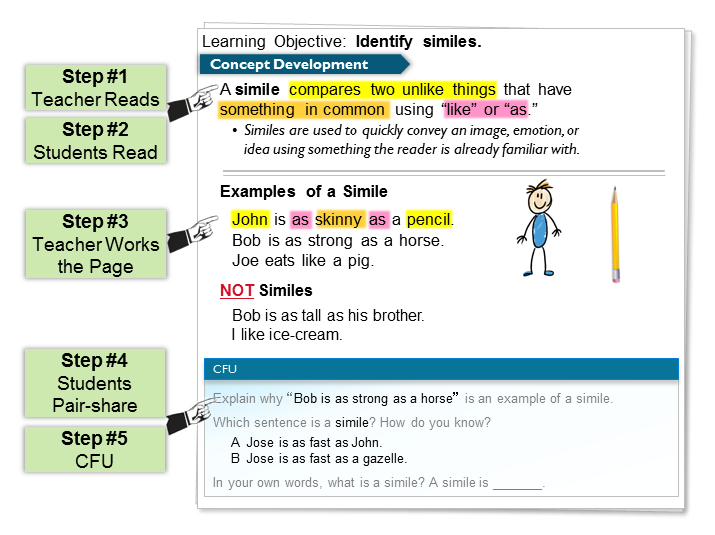
To teach Concept Development, present a written concept definition and then explain and elaborate on what the concept means using examples that illustrate the definition (critical attribute).
The “Big Idea” here is to teach concept definitions by pointing back and forth between attributes (definitions, examples, and non-examples). We call this Work the Page. Work the Page by pointing back and forth between the written definitions and examples that show students (including EL students) exactly what the written definitions mean. For this to be effective, the concept definitions and examples need to be available on the same page or PowerPoint slide.
Concept Development, along with the majority of EDI components, includes Checking for Understanding questions. In CFU questions, students will be asked to apply or distinguish the difference between examples and non-examples and justify their answer. To verify that the students understand the concept, they will be asked CFU questions about rephrasing the definition in their own words.
How to teach Concept Development by “Working the Page”
- Teacher reads the concept definition, while students track.
- Students read the definition.
- Teacher Works the Page:
– teacher reads critical attributes and points and clarifies that the critical attributes in the definition are contained in the examples
– teacher reads the non-examples and points and clarifies that non-examples do not contain all the critical attributes
– teacher provides a Cognitive Strategy to help students remember
– teacher includes a physical demonstration, if applicable - Pair-share (students point, if applicable)
- Check for Understanding
Working the Page to Teach Concept Development Example:
Citations
Explicit Direct Instruction: The Power of the Well-Crafted, Well-Taught Lesson by John Hollingsworth and Silvia Ybarra
Explicit Direct Instruction for English Learners by John Hollingsworth and Silvia Ybarra
Explicit Direct Instruction® (EDI®) for Common Core Workshop developed by DataWORKS




